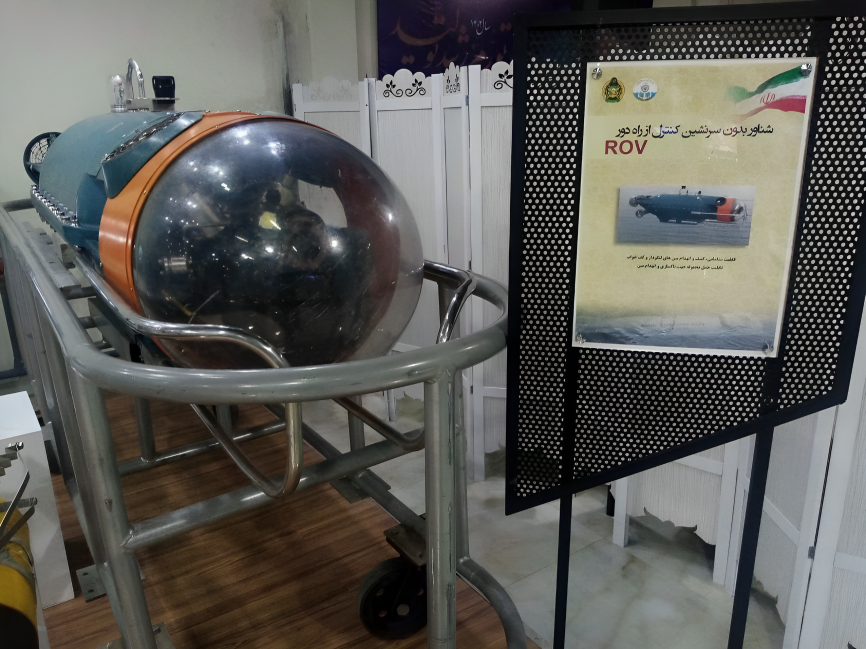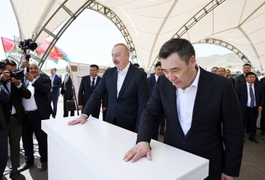The Iranian Army’s navy unveiled a remotely operated unmanned underwater vehicle and a vertical take-off drone at the Iran Army Navy’s exhibition of scientific and technological achievements on December 2, as reported by the Tasnim News Agency.
The homegrown vehicle, capable of detecting and destroying various types of underwater mines, has a human operator and can be deployed against both moored and bottom mines. It can operate for up to 24 hours at a depth of up to 200 meters below the surface.
The vehicle can address a range of underwater mines laid at depths of 10 to 50 meters, posing a threat to vessels as heavy as 250 tons. It is designed to carry cargo for mine destruction, serving as a valuable addition to the Army navy’s RH-53 mine-sweeping helicopters and minesweeping vessels like the Shahin mine-hunting vessel.
In 2013, the Iranian Navy introduced a mine-clearing system that used only electromagnetic signals to activate a naval mine’s detonator. A year later, they unveiled a new minesweeping kit that generates sonic and electromagnetic signals to remotely detonate naval mines, carried by RH naval helicopters.
At the same exhibition, the Chamrosh-4 drone was unveiled, featuring vertical launch capability and the ability to fly from various naval vessels. It is equipped to carry out assigned missions. Additionally, a smart unmanned hydroplane with a direct current (DC) motor was showcased during the event.
The exhibition in Tehran displayed a variety of seaborne weaponry, anti-ship missile systems, electronic warfare, telecommunication, and advanced domestically-produced parts. Iranian military experts and technicians have achieved self-sufficiency in producing a wide array of equipment, emphasizing their commitment to enhancing military capabilities, including missile and drone technology, despite Western sanctions and opposition from Israel.
Regarding the Fattah-2 missile system, Iran’s Foreign Ministry spokesman Nasser Kanani rejected the European troika’s (E3) statement on December 1, describing it as “misleading, legally baseless, and politically motivated.” Kanani emphasized that UN restrictions on the Iranian missile program had expired on October 18 and defended Iran’s development of conventional missile capacity as a means of deterrence and based on defense needs.
The joint statement by the UK, France, and Germany on November 30 condemning Iran’s announcement of the Fattah-2 hypersonic missile was deemed unacceptable by Iran, with the missile unveiled by the Islamic Revolution Guards Corps (IRGC) at a ceremony in Tehran on November 19.







 President Ilham Aliyev shed light on the evolving contours of the peace process with Armenia during an international conference in Baku this week. ...
President Ilham Aliyev shed light on the evolving contours of the peace process with Armenia during an international conference in Baku this week. ...
 Azerbaijan and Armenia started the process of demarcation of their border on Tuesday, with the installation of the first border markers based on ge...
Azerbaijan and Armenia started the process of demarcation of their border on Tuesday, with the installation of the first border markers based on ge...
 Iranian President Ebrahim Raisi expressed Tehran’s readiness to participate in significant development projects in Sri Lanka during the inauguratio...
Iranian President Ebrahim Raisi expressed Tehran’s readiness to participate in significant development projects in Sri Lanka during the inauguratio...
 Iran and Pakistan have signed eight cooperation documents in various fields, and agreed to strengthen ties to fight terrorism in the region.
Iran and Pakistan have signed eight cooperation documents in various fields, and agreed to strengthen ties to fight terrorism in the region.
 As the conflict between Ukraine and Russia escalates, the strategic importance of Kharkiv, Ukraine's second-largest city, has come sharply into focus.
As the conflict between Ukraine and Russia escalates, the strategic importance of Kharkiv, Ukraine's second-largest city, has come sharply into focus.



